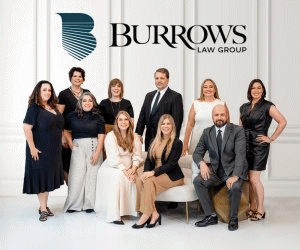It takes a combination of extensive training, a lot of science, research and a keen artist’s eye to do what Denton County Sheriff’s Deputy Leslie Willingham accomplishes. One of an estimated 32 certified forensic sculptors in the world, Willingham’s work already has solved a several cases around the country – from identifying a suspect through witness recollections to create a sketch to identifying a long-missing man from skeletal remains.
Solving cases
In early September, University Park police asked Willingham to help identify the suspect in an aggravated assault near the Southern Methodist University campus. Working with a witness, she developed a sketch of the possible suspect which was circulated to other agencies.
“She was very precise,” Willingham recalled. When sketching a face, every aspect is important – from the curvature of the jaw to the thickness of the brows. The last part she did was the eyes. “She didn’t want to describe them.”
Within four hours, the suspect’s sketch was recognized by criminal investigation division officers from the Corsicana Police Department, who had the suspect in custody after spotting him in a parking lot and pursuing him by vehicle until he wrecked and then fled on foot. Within a short time, they had him booked complete with a mug shot. About the same time, her composite was being sent around to departments. Someone quickly made the connection. University Park police traveled to Navarro County to take a swab for DNA comparison. Once the suspect was identified, he quickly confessed to the crime in University Park.
The witness, who had not been resting well, slept soundly that night.
Several months before, during the summer, Willingham helped identify a 33-year-old Delaware man after remains were discovered in late 2012 in a wooded area behind a home improvement store. Authorities were unable to identify the victim due to advanced decomposition, estimating he had been dead for up to three months before his body was discovered.
After he was entered into the National Missing and Unidentified Persons Data System, a medical examiner’s office requested Willingham’s help to create a 3-D facial reconstruction from a CT scan of the man’s skull.
“I wanted to volunteer to help,” Willingham said of her involvement in the missing persons case. “He’s got a name, he’s got a family looking for him. If I can do something to help, I’m willing.”
Exposure to the elements made the skull too fragile to handle. The only answer was to create a CAT scan of the skull and put the scan into a 3-D printer to make a resin clay image. But finding such a 3-D printer proved challenging until the University of Florida offered to do it at a reasonable cost.
She studied the mummification process to determine the man’s likely skin color and, with evidence of a tattoo, she decided to create an upper body including shoulder muscle and upper backbone and neck.
Willingham took an extra step, seeking a peer review – a step she believed important to ensure accuracy in every measurement.
“The second set of eyes made all the difference in the world,” she said. A video of the reconstruction was made in color and grayscale for both television and print. “We took photos the same as if taking a family photo – anything to make someone say, ‘That reminds me …’.”
After completing the reconstruction on June 30, eight days later family visited the Dover police after they recognized the man in the reconstruction photos being circulated. It was the tattoo and the full upper body reconstruction that helped them identify their missing loved one, Willingham said.
Soon, officials had a name – Ian Michael Withrow.
The road to forensic artistry
It all started with a green thumb.
While working as a dispatcher in Flaming Gorge, Wyoming, an officer brought in an unidentified item into the police station that turned out to be a green thumb from someone’s hand.
The case of the green thumb was a mystery later solved when a man reported getting his hand caught in a boat propeller, losing his thumb.
Sure enough, the prints matched. An interesting side note was when the fisherman filed suit to get his thumb back.
Instead of being repulsed by the green thumb, Willingham was intrigued.
An artist since 1973, Willingham pursued an interest in law enforcement, later becoming a peace officer in Texas in 1999. Soon after, she began to seriously pursue combining her two interests into one through forensic art and sculpture.
Since then, she has trained for 3-D facial reconstruction, 2-D facial reconstruction, postmortem drawing and composite drawing. She’s attended the FBI’s Quantico headquarters where she trained with the best in the country. Willingham also has earned the advanced level status as a peace officer and has earned a master level in detention. As a forensic sculptor, she has earned certification with the International Association for Identification – the world’s oldest and largest forensic association.
The future
Though Willingham has a full-time job with the Denton County Sheriff’s Office, her interests in forensic art and sculpture continue. Last year, she created her own company, A Forensic Art Resolution, to be able to provide services to those in need of her particularly skills – skills she does in her home studio during her off hours.
She anticipates continuing both her day and off-hour jobs for as long as she can.
“I stepped into law enforcement,” she said. “And there’s nothing I don’t like.”




















